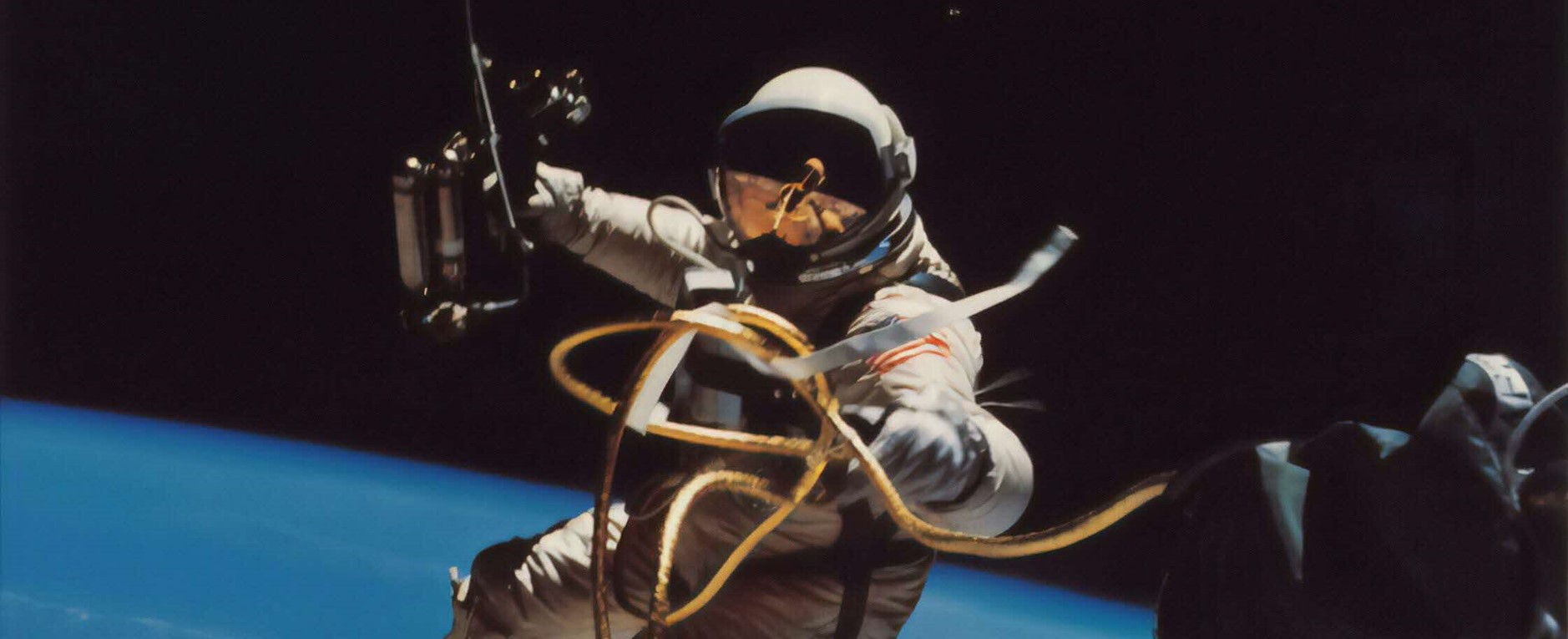New York City is many things: a kaleidoscopic explosion of theatre; a culinary mecca; the nerve centre of the global financial system. Yet even within that extravaganza, three experiences stand out. No one can say they have truly visited New York City if they omit a trip to the Rockefeller Center, where they can soak in the panoramic views of the city; if they skip The Guggenheim, an art museum with a striking helical façade; if they miss out on being serenaded by maestros at the Carnegie Hall.
Those are quintessential experiences of New York City, but they are also the legacies of philanthropists who have imprinted their name on the physical and cultural landscape of the city. The Rockefeller Center is named after John D. Rockefeller Jr., who supported the construction of the sprawling complex with around USD250mn. Likewise, the official name of The Guggenheim, the Solomon R. Guggenheim Museum, reveals its ancestry with the American mining magnate, while the Carnegie Hall can trace its establishment to Andrew Carnegie, who, in 1889, gave USD2mn to the project.
That these buildings and experiences have entered our public lexicon is testimony to how philanthropy transmutes the act of giving from a discrete event into an almost metaphysical gesture that echoes endlessly in culture and across time. To put it more plainly, philanthropy elevates both the donor and recipient. In a world structured by zero-sum thinking—that insists on a dichotomy between winners and losers—philanthropy shows another way forward.
Detractors might say it is still about trade-offs: Splash a few million and you can get your name engraved on a building. That accusation misses the point. These philanthropists did not simply donate a large sum in a one-off affair; they established foundations and trusts to sustain their philanthropic endeavours beyond their lifetimes. That dedication is why their names—Rockefeller, Guggenheim, Carnegie—resonate in the unconscious of the city and culture, burnishing their legacy.
The love of humanity
Herein, too, lies the difference between philanthropy and charity. Charity is seen as an immediate reaction to a pressing issue. Think, for instance, of charitable giving, often in monetary terms or practical goods like food, in the immediate aftermath of a disaster. Philanthropy, on the other hand, takes a more long-term perspective in tackling issues plaguing society, such as access to education, eradication of disease, or transiting to a net-zero future. It offers not just pecuniary aid, either, but also intangible resources like expertise, connections, and even time itself.
Dig a bit deeper and we find this notion planted in philanthropy’s etymological root. The word “philanthropy” stems from the Greek “philos” (φῐ́λος), which means “love,” and “anthropos” (ἄνθρωπος), meaning “humanity.” Taken together, “philanthropy” literally means the love of humanity. With such an all-encompassing remit and a timescale some might say extends species-long, philanthropy is an undertaking and — a reward — uniquely suited to family offices, with their custody of generational wealth.
As old as time
c.387BCE
An endowment supported the establishment of Plato’s Academy, a school where students and scholars gathered to discuss philosophy. Thanks to the endowment, the Academy charged no fees for around 900 years.
c.529 CE
Monte Cassino, the first Benedictine monastery in Europe, was established by St. Benedict of Nursia. The monastery’s hospital, widely considered to be the first in Europe in modern history, was funded with alms and endowments.
9th Century
The oldest extant deed of a waqf. In Islamic law, a waqf is a charitable fund holding donated assets like land or buildings, which are used to benefit society. Waqf endowments were the primary means by which public services like health and education were provided in the Islamic world.
20th Century
Viewed as a golden age of philanthropy, the early 1900s saw exponential growth of foundations. In 1915, there were 27 foundations; by 1930, there were over 200. Some of the foundations established then, like the Rockefeller Foundation and the Ford Foundation, are still among the most well-known and active today.
Present
Digitalisation is also the face of philanthropy. In April 2024, DBS Foundation, Temasek Trust, and UBS Optimus Foundation partnered to launch Co-Axis, a digital impact marketplace. Co-Axis will feature over 70 impact opportunities from more than 40 countries – essentially an online store for philanthropy.
Reasons to Give
For individuals among the UHNW who do wish to have the limelight foisted on them, there are reasons beyond leaving a legacy to engage in philanthropy. Broadly speaking, there are three additional benefits philanthropy grants its givers: one, infusing meaning into wealth by changing the world; two, shaping the family’s younger generation; last, attaining efficiency in wealth taxes.

1. Find meaning in changing the world
The fruits philanthropy bears are often public goods; that is, something that benefits everyone universally without its supply diminishing. By definition, the private market cannot provide these goods. It makes no commercial sense for a profit-seeking corporation to purify the air, for example, because everyone would get to enjoy it even if they are not its intended clients. And where private markets fail, philanthropists step in to rectify the fault.
It may sound idealistic or even naïve to say that these billionaires are so selfless as to derive joy from improving the world. But going by their pronouncements, that is indeed the reality. “Money has no utility to me beyond a certain point,” Bill Gates told The Telegraph in a 2013 interview. “Its utility is entirely in building an organisation and getting the resources out to the poorest in the world.”
Those are not just honeyed words designed to score public relation points. Gates put his money where his mouth is. In 2000, the Microsoft founder launched the Bill & Melinda Gates Foundation (BMGF) in 2000, and, between 2000 and 2018, both Bill and Melinda Gates had donated around USD36bn to the foundation.
That largesse has had a tangible impact on the world. One of the BMGF’s signature initiatives is the eradication of malaria. With the philanthropic support of the BMFG, 1.7bn cases of malaria have been prevented, saving 10.6mn lives worldwide.
Gates’s quips and actions bring to mind an oft-quoted study conducted by Harvard University, which found that money beyond a certain level will only bring marginal returns in terms of happiness. And as financially savvy individuals, the ultra-high know it will be wiser to deploy their capital elsewhere when returns diminish. For most, it seems philanthropy is the avenue where they reap most returns.
Money has no utility to me beyond a certain point. Its utility is entirely in building an organization and getting the resources out to the poorest in the world.
Bill Gates
2. Shape the younger generation
Philanthropy channels its attention outwards, radiating warmth to those in need. But it is not a unidirectional act – those who give stand to benefit as well. Some tweaking of the wording may be necessary here: philanthropy is not mere “giving” in terms of disbursing money and disappearing. As a financial gesture more involved than charity, philanthropy essentially serves as a microcosm of the larger financial world. It entails managing budgets, allocating assets, and evaluating long-term impact and returns.
This sense of operating a business, only in miniature, makes philanthropy a safe space where the younger generation of UHNW families can cultivate their financial literacy. In compelling them to think about what sort of values they want to embody and express through their efforts, philanthropy also promulgates the family’s value structure to its younger members, helping to foster cohesion.
That is not to say philanthropy is a mere dress rehearsal for the younger generation to emulate their predecessors. It is also a staging ground for them to introduce fresh ideas. For instance, the younger generation is nimbly adapting processes in entrepreneurship to take philanthropy forward. Take the Asian Venture Philanthropy Network (AVPN). The organisation mobilises capital from its members and channels it towards programmes that may still be fledgling, but have potential, adopting the process in venture capitalism.
In this way, the next generation not only pick up financial nous, they also develop new ways of running organisations that can help them shepherd their families’ businesses into the future.
3. Ensure one’s portfolio is tax efficient
There is no such thing as a free lunch, goes the popular saying. Philanthropy thwarts this adage, quite literally. To give one example among many: during the Covid-19 pandemic, India’s richest man Mukesh Ambani, through his charitable organisation Reliance Group, donated meals to the needy across the country.
Economically speaking, however, that aphorism means that everything comes with a cost. Enjoying a meal without having to fork out a single cent, for instance, might be infinitely pleasurable, but it means you are forgoing an opportunity elsewhere. Yet philanthropy, once again, challenges this ingrained idea.
Two words: tax efficiency. To encourage philanthropy, many countries grant tax incentives to donations. In July 2023, the Monetary Authority of Singapore allowed 100% tax deduction on overseas donations made through qualifying local intermediaries. In a similar vein, Hong Kong relaxed its tax concession scheme for family offices engaged in philanthropy.
Granted, a 100% tax deduction does not mean donors recoup in full what they disburse. It merely lowers their assessed income by the same amount. Still, when summed up with the host of benefits that philanthropy grants – improving humanity while lowering tax burdens, nurturing the next generation, and bringing business practices into the future – it is arguable that the pros far outweigh the cons.

Modern-day philanthropy
Given the spectrum of benefits philanthropy bestows on both its recipient and donor, it is perhaps unsurprising, then, that philanthropy is prioritised by family offices across the world. According to a 2021 report by the Milken Institute, 71% of family offices globally are involved in philanthropy. The engagement level is even higher in Asia-Pacific: research by Campden Wealth showed nine out of 10 single family offices in the region participate in philanthropic endeavours, with each contributing an average of USD4mn annually.
The relative youthfulness of the ultra-high in Asia (to use a sample and representative statistic, the average age of a billionaire in China is 60; in the US, it is 68) also means how philanthropy is being carried out on the continent is being shaken up. The next generation has infused an entrepreneurial modus operandi, and has poured their personal passion, into philanthropy, giving rise to trends like hybrid philanthropy, venture philanthropy, and impact investing.
To Give is Not Easy
“To [give money] to the right person, to the right extent, at the right time, with the right aim, and in the right way, that is not for everyone, nor is it easy,” wrote Aristotle in Nicomachean Ethics. Published around 350 BCE, Aristotle’s statement still holds true more than 2,000 years later: philanthropy is difficult.
While it is undeniable philanthropy brings about positive changes, the problems plaguing the world are not so easily solved. In the first place, how do we choose which cause to devote time and effort to? With philanthropy’s impact notoriously hard to measure, or even see, can we truly know if we are truly making a difference? And if it takes time for change to percolate through the world, would it only happen decades, or perhaps even centuries later?
Even with these obstacles, family offices are particularly suited to philanthropy. They have the expertise to choose a cause carefully, the long-term time frame to commit to it, often in perpetuity, and the resources to ensure the project runs to fruition. This relationship is a two-way street. Philanthropy offers family offices a way to bridge the gap between capital returns, promotion of values, and their desire to give back to society.
If family offices had existed in Aristotle’s time – or if he could have taken a stroll around the New York of today, flourishing on philanthropic foundations – perhaps he would have worded the quotation a little differently. His assertion that it is not easy to give money in all the right ways stands, of course – but it is just that bit easier, and more rewarding, for family offices.
DisclaimersJoin DBS Private Bank
With our size, safety and expertise, you can fully immerse yourself in life's best moments while we handle the rest.
It’s time to take the next step, the logical step.







